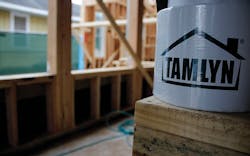Ventilation, how much do you really need it?
There are several ways to prevent moisture from building up in your attic available in today’s marketplace, what is the best way? Keep in mind that different climatic areas can alter the recommendations. Proper static airflow that equalizes pressure in the attic without depending on a completely sealed system or a power vent is a great way to go! Let’s look at why.
My home, built in 1984 with a hip roof using some good old-fashioned soffit vents and nothing else. The first thing I did when buying it in 1996 since I only knew enough at that time to realize that it was necessary to move the air, was cut a hole in the roof for a temperature-controlled power exhaust fan within 3’ of the ridge. When I cut that opening, the wind generated by the heat escaping the attic felt like a giant hairdryer just turned on! Pleased with the obvious result I installed the powered exhaust fan and would then purchasetwo more of them over the next 3 years as they continually burned out. The roof area was far too large for the fan sucking 150* air out of a hip roof attic. My answer came by way of a hailstorm destroying my roof in year 3 and learning the advantages of continuous soffit vents, vented ridge, and staticair movement over powered systems. So far, 24 years passed without issues!
Sealed attics with high R factor insulation are another method to achieve dryness in that cave above your home. However, it is dependent on the powered HVAC system to work year after year and of the sensors malfunction, the moisture can build up beyond a bit of mold when you unknowingly have a system out of order for months. Even if it works properly, sometimes after-market changes or structure settling can cause gaps in the sealed insulation. With the new materials and tighter construction methods, moisture issues can fester for months causing health issues and structural damage before being noticed.
The bottom line is you start at the soffit with a system like the Tamlyn continuous vents that provide ample static air movement for the attic space without depending on mechanically forced air that will last the life of the property. They begin with a minimum NFA (Net Free Area) of 9” per lineal foot for the beginnings of a great ventilation system. ICC code R806.2 of 2015, commonly used today and states that ventilation must be 1/150 NFA of the area in the ventilated attic space, barring exceptions.
Beware of using boards or other soffit material that has holes punched into them and called a built-in soffit vent. You can only place so many holes in those products before they lose strength to hold up, and due to their thickness versus real vents, wind shear tremendously reduces the manufactures NFA ratings.
Naturally, for best practice, use a continuous soffit vent that delivers at least an NFA rating of 9” per lineal foot for all soffit applications.Additional benefits of Tamlyn’s continuous vents are the aesthetic styles, materials, and more robust NFA options available. Start your journey to attic and structure health at https://tamlyn.com.
“When Doing it Right Matters”

